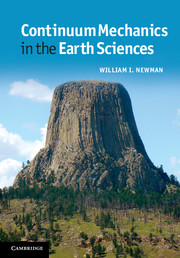Book contents
9 - Nonlinearity in the Earth
Published online by Cambridge University Press: 05 June 2012
Summary
As we scrutinize the landforms that surround us, we develop a sense of appreciation for the multitude of processes that shaped our planet. At the outset, we may think it is improbable that, out of this chaotic combination of physical processes, there could emerge any sense of abiding order. Nevertheless, we have come to appreciate during the preceding decades that the collective interaction of many different ingredients, as demonstrated by the Earth, yields manifestations of a new class of behavior which we refer to as “nonlinearity.” It is important that we distinguish between the nonlinearity that we associate with the kinds of differential equations that we have discussed – i.e. the presence of terms that are of higher order than linear – from the collective behavior and self-organization that we sometimes observe. We reviewed this collective behavior in the context of solitary waves. Another aspect sometimes maintained by nonlinearity has roots in geometry and, as a consequence, influences in a profound way a variety of physical systems. Later, we shall survey features of percolation and fractal geometry as illustrations of this. We observed earlier how a “cascade” picture for energy transfer between different length scales at the same rate, as a form of self-organization, could help us understand turbulence and the emergence of power-law scalings. Perhaps this and other kinds of nonlinearity can help us understand the nature of earthquakes.
- Type
- Chapter
- Information
- Continuum Mechanics in the Earth Sciences , pp. 159 - 174Publisher: Cambridge University PressPrint publication year: 2012

